In summer, for our high-altitude climbs, we have to leave Nepal or the Andes and head northwest of the Himalayas, sheltered from the monsoon, towards Pakistan, Xinjiang, Kyrgyzstan and Tajikistan. All our summer expeditions to peaks over 7,000 and 8,000 meters are held there. In this blog post, we take a look back at our summer 2024 very-high mountaineering expeditions, featuring two recent videos of our latest expeditions to the Lenin (7134 m) and Korjenevskaya (7105 m) peaks.
Climb of of Central Asian peaks over 7000 meters
We're talking here about all five Snow Leopard Challenge expeditions, all of which take place between mid-July and mid-August, between Kyrgyzstan and Tajikistan, as well as Mustagh Ata (7546 m) in western China's Xinjiang region. And let's not forget Kun (7077 m), on the western edge of Nepal, bordering the Indian state of Jammu and Kashmir on the one hand, and the provinces of Zanskar and Ladakh on the other. All in all, there are more than eight peaks over 7,000 meters, each more exceptional than the last, the most accessible being Lenin and Mustagh Ata.
Snow Leopard challenge expeditions
Peak Communism © Serge Hardy
In the 60s, the USSR was at the height of its glory. But borders were hermetically sealed, and Soviet mountaineers expressed their (immense) talent on the many peaks that stretched from one end of the former Empire of the Tsars to the other. The Himalayas are off-limits to them. But their playground is gigantic: Caucasus, Pamir Alaï, Fanskyes Mountains, Great Pamir, Tien Shan, Kamtchatka... On October 12, 1967, to encourage and reward the best in the race to the top, the Bureau of the Central Council of Sports Societies and Organizations of the USSR decided to award a prize to those who managed to climb the five highest Soviet summits, which are, in ascending order of difficulty:
- Ibn Sina Peak (ex-Lenin Peak) - 7134 m on the Tajikistan-Kyrgyzstan border
- Ozodi Peak (ex-Korjenevskaya) - 7105 m in Tajikistan
- Ismail Somoni Peak (ex-Communism Peak) - 7495 m in Tajikistan
- Khan Tengri Peak - 7010 m on the Kyrgyzstan-Kazakhstan border (the geological altitude is 6995 m, but due to its thick shell of ice at the summit, the official altitude is 7010 m)
- Jengish Chokosu Peak (ex-Victory Peak, ex-Pobeda Peak) - 7439 m in Kyrgyzstan
The reward: to become a “Snow Leopard”, the almost mythical animal that haunts the mountains of Central Asia. Many will be lining up to win this prestigious “Snow Leopard” medal. But almost exclusively climbers from beyond the Iron Curtain, from the Soviet Union.
With mountain guide Serge Bazin, Expeditions Unlimited has lined up for this rare challenge with one expedition and one summit every two years from this summer 2023, starting with the 7105-meter Korjenevskaya peak. Watch the replay of our latest web conference on Snow Leopard Challenge in French (English subtitled).
Climbing Peak Lenin (7134 meters) in Kyrgyzstan
For the fourth time, we're heading back to Peak Lenin on July 22, 2024, under the guidance of Serge Bazin. The group is almost complete, and it won't be long before you join us on our next ascent of Peak Lenin. And take a look back at our three previous expeditions.
Climbing the Peak Korjenevskaya (7105 meters) in Tajikistan
After our successful ascent in the summer of 2023, during which 5 climbers reached the summit, we're taking a small group back up for the summer of 2024 on this slightly more technically demanding summit, with a very wild base camp overlooking the Peak of Communism. Take a look at the pictures (by Jérôme Plantamura, our warmest thanks) of our latest expedition to Korjenevskaya, guided by Serge.
You can join the other Snow Leopard summits next summer in international departures with our partners, including Khan Tengri. Or wait for our next expedition to Khan Tengri, led by Serge Bazin, in summer 2025. The Pobeda and Communisme peaks are highly committed expeditions. Don't hesitate to contact us to discuss your plans.
Climbing Mustagh Ata (7546 m) in West China
Mustagh Ata is a mountain whose summit rises to 7546 m, a good trial run to test yourself at very high altitude without oxygen before an 8000, often on the Everest route. Not very technical on the ascent, we use ski-touring, very pleasant to ski down! Its ascent will now be possible next summer, thanks to the reopening of post-Covid China. In 2019, our expedition saw 8 participants reach the summit with, what's more, a project to clean up its camps. Take a look at our images from this latest expedition.
Pakistan's five 8,000-meter-plus climbs
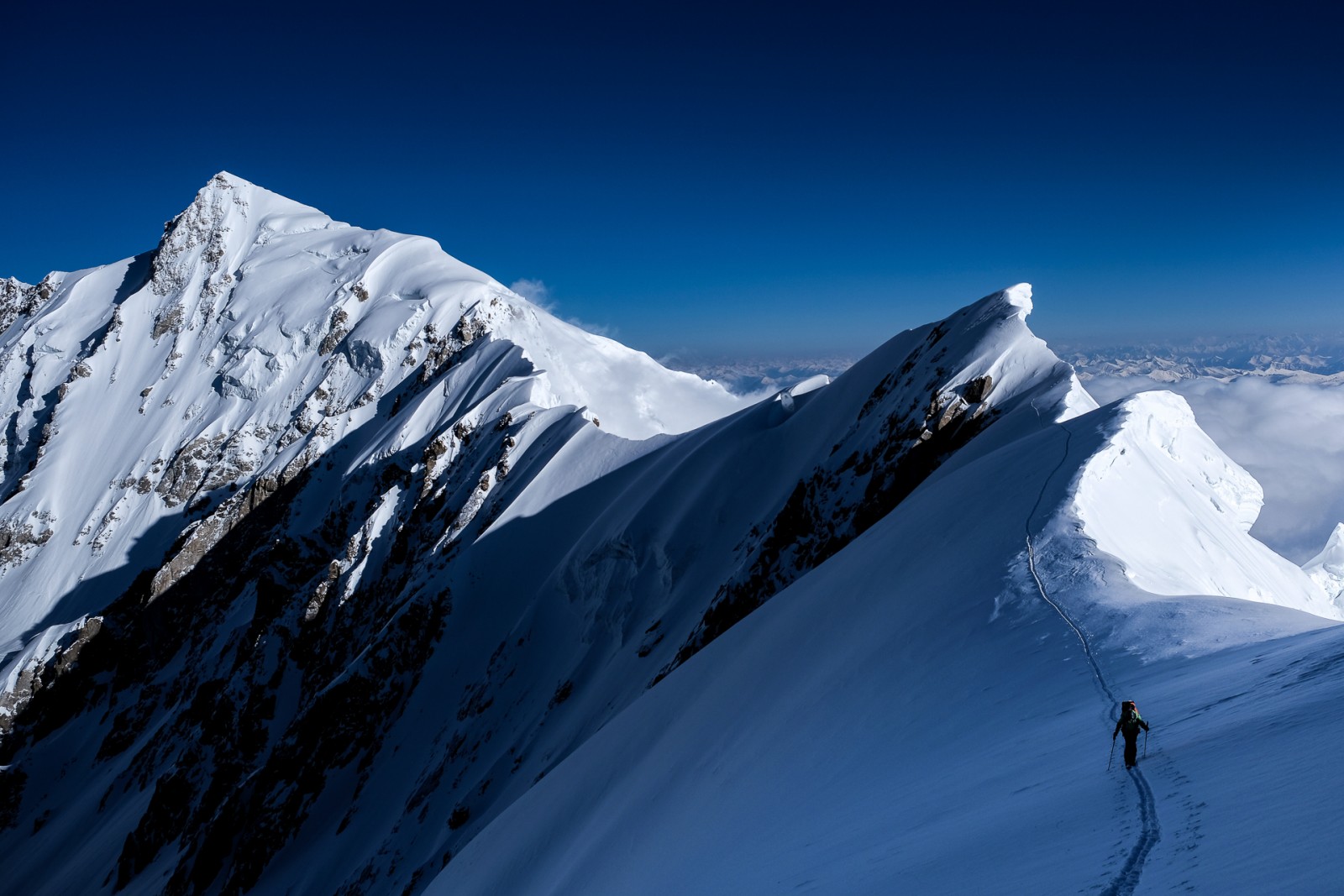
Nanga Parbat climb © Boris Langenstein
Between June and July, Pakistan offers five of the world's fourteen highest peaks at over 8,000 meters, in the wildest of environments, from the world's second-highest peak, K2, to Gasherbrum I and II, Broad Peak and Nanga Parbat. With the exception of Nanga Parbat, the approach to all the others is via the Baltoro glacier and the return via the Gondogoro pass and the Hushe valley, thus completing a very complete itinerary with a magnificent approach trek. The weather is often capricious in this part of the world and windows, if any, are short. In descending order of height, which here also corresponds to descending order of difficulty, we find :
- K2 at 8611 meters
- Nanga Parbat at 8125 metres
- Gasherbrum I (or K5) at 8080 metres
- Broad Peak (or K4) at 8051 metres
- Gasherbrum II (or K3) at 8035 metres
For summer 2024, we're working on two projects in particular: the ascent of Broad Peak and K2. The other three summits are much more challenging. K2 has recently gained in popularity thanks to Everest-style organization at and between camps, it remains a very steep mountain with real objective dangers, including incessant rock falls.
Climbing Broad Peak (8051 m) in Pakistan
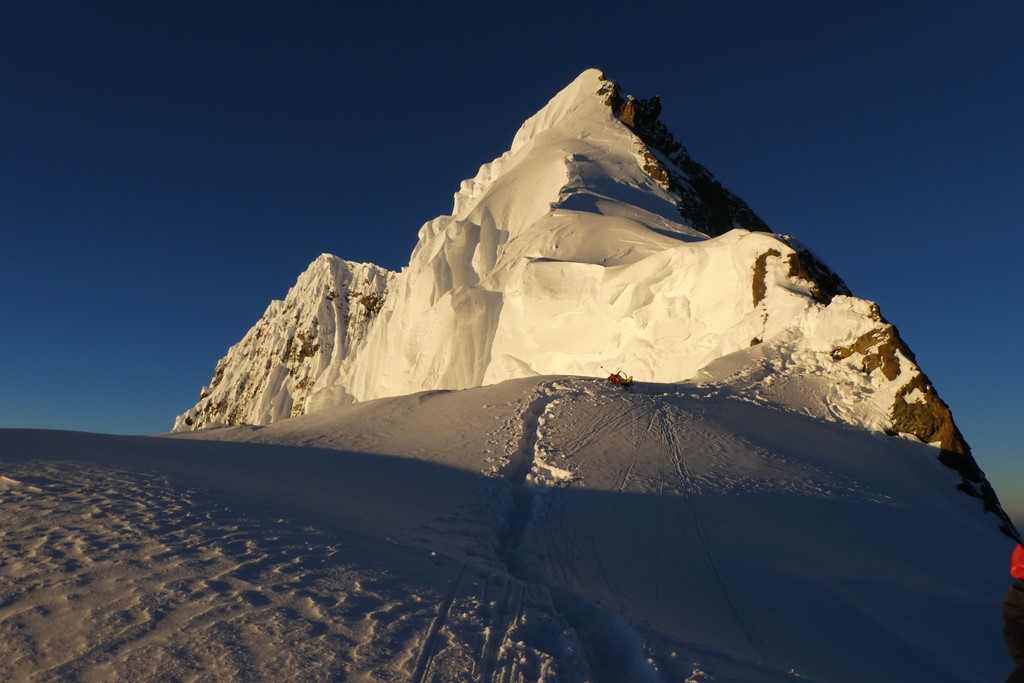
Broad Peak © Expeditions Unlimited
We are working on an ascent of Broad Peak at the beginning of June, the twelfth highest peak on earth, at a slightly higher technical level than the ascent of Gasherbrum II. The direct route to the summit avoids long stays in high-altitude camps. The route is free from the usual objective dangers: no unstable serac bars, no large avalanche-prone slopes. Only three camps are needed to reach the summit. The ascent is made along the West Ridge to the small col (Windy Gap) that separates Broad Peak Central (8011 m) from Broad Peak itself (8047 m). It seems to be one of the safest 8000-meter summits, and with the best success rate. The view of K2 is breathtaking! In fact, Broad Peak is sometimes climbed as an acclimatization summit for K2... For very strong climbers!
Climbing Gasherbrum II (8035 m) in Pakistan
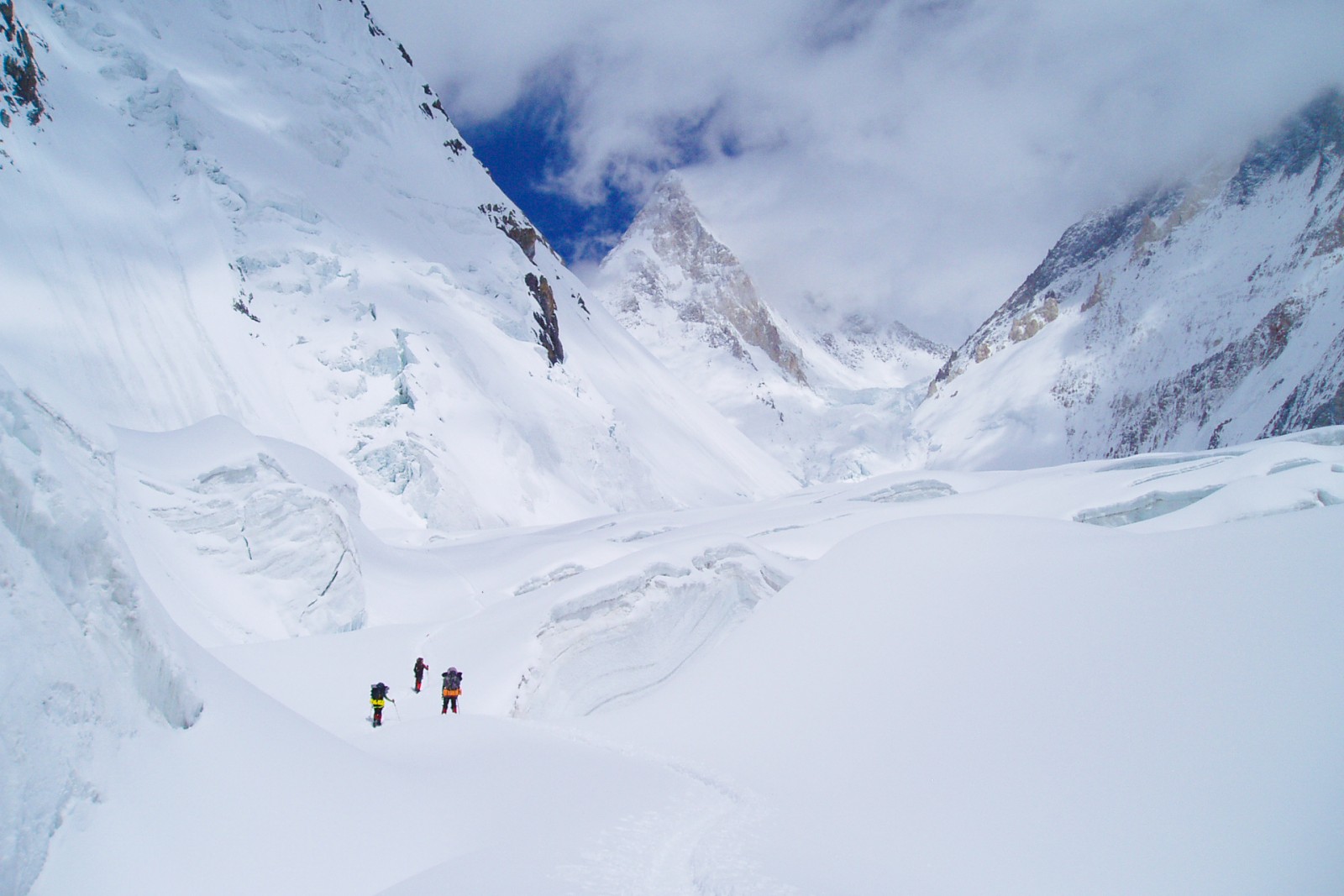
Gaherbrum II © Jérôme Brisebourg
We are also working on an ascent of Gasherbrum II in June, the thirteenth highest peak on earth. Technically a little more difficult than Cho Oyu, but less exposed to objective risks. Three to four altitude camps spread along the beautiful West Ridge, suspended in mid-air, precede the arrival at the summit. It is sometimes climbed in combination with Gasherbrum I, whose base camp it shares.
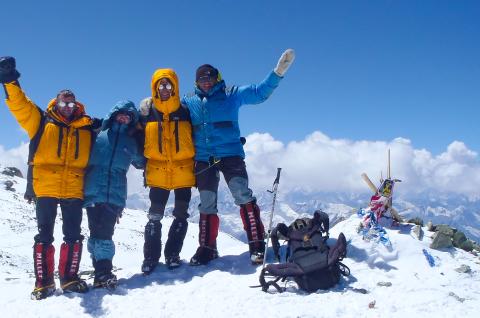
Climb Lenin Peak at 7154 meters in Kyrgyzstan

Climb Korzhenevskoi Peak at 7105 meters in Tajikistan
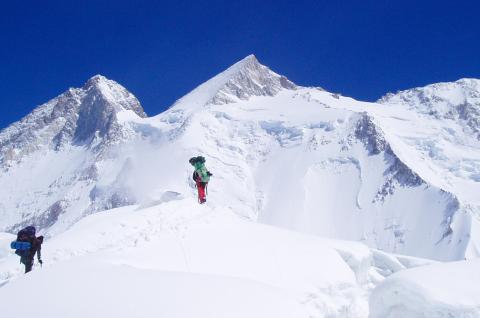

 Expeditions Unlimited blog
Expeditions Unlimited blog